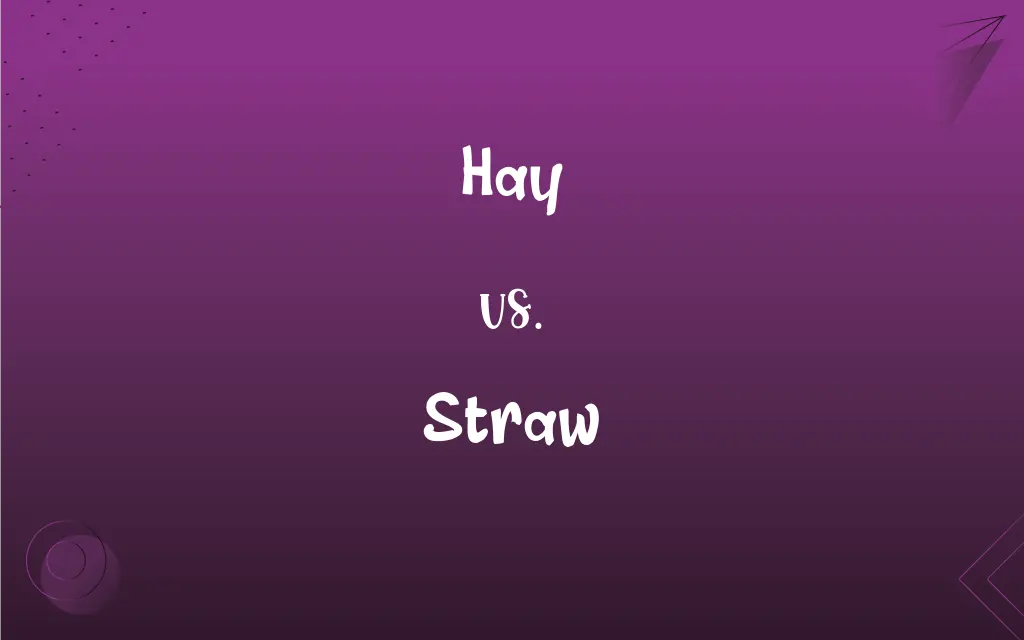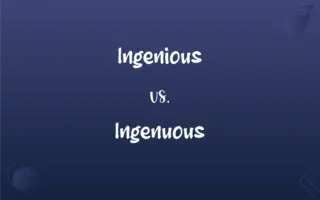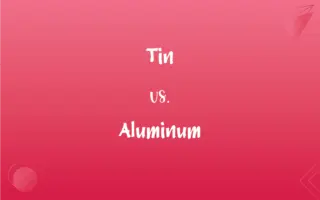Hay vs. Straw: What's the Difference?
Edited by Janet White || By Harlon Moss || Updated on October 26, 2023
Hay is dried grass used as animal feed; straw is the dry stalks of cereals, often used as bedding or mulch.

Key Differences
Hay and straw are both agricultural products, but they serve different purposes. Hay is typically grown, harvested, and dried to feed livestock, whereas straw is a byproduct of cereal crops, left after the grains are harvested.
Hay retains much of its nutritive value since it's primarily made of dried grasses and legumes. Animals, such as cows and horses, consume hay as a major part of their diet. Straw, being the residual stalks after grains like wheat and barley are harvested, doesn't have as much nutritional value and isn't primarily used for feeding.
Beyond feed, hay can also be used in sustainable building, like in hay bale construction. Straw, on the other hand, is frequently employed as bedding for animals because of its low moisture content. It can also be used in straw bale construction or as garden mulch.
The appearance of hay and straw can sometimes be distinguished by their color and texture. Hay usually has a greenish hue due to the presence of dried plants and is softer, whereas straw tends to be yellower and is coarser.
While both hay and straw can be baled for transport and storage, it's vital for farmers and consumers alike to recognize their distinct uses. Misidentifying them or using them interchangeably can have consequences, especially in livestock management.
ADVERTISEMENT
Comparison Chart
Primary Use
Animal feed.
Bedding, mulch, construction.
Composition
Dried grasses and legumes.
Dry stalks of cereal crops.
Nutritional Value
High, meant for consumption.
Low, not primarily for feeding.
Appearance
Greener and softer.
Yellower and coarser.
Relation to Crop
Grown specifically for feed.
Byproduct after grain is harvested.
ADVERTISEMENT
Hay and Straw Definitions
Hay
A term referring to a small village or settlement.
The quaint hay had a tight-knit community.
Straw
Hollow paper or plastic tube used for drinking liquids.
He sipped his drink through a straw.
Hay
A mixture of plants like clover and alfalfa dried for feed.
The horses preferred a mix of hay.
Straw
A material used as insulation or in construction.
Straw bales were used to build the eco-friendly house.
Hay
Material used in certain construction methods.
They built an energy-efficient home using hay bales.
Straw
A pale yellow color resembling dry straw.
She wore a straw-colored hat to the beach.
Hay
Dried grass or legumes used as feed for livestock.
The farmer stocked up on hay for the winter.
Straw
Dry stalks of cereal plants, after the grain and chaff have been removed.
She spread straw in the chicken coop for bedding.
Hay
Grass that's been mown and dried for use as fodder.
The scent of fresh hay filled the barn.
Straw
Something of little worth or value.
His excuse was the last straw that broke their trust.
Hay
Grass or other plants, such as clover or alfalfa, cut and dried for fodder.
Straw
Stalks of threshed grain, used as bedding and food for animals, for thatching, and for weaving or braiding, as into baskets.
FAQs
Which one is used for feeding animals?
Hay is primarily used for feeding animals.
Can you use straw as feed?
Straw has low nutritional value and isn't a primary feed, but can be supplementary.
Are hay and straw the same?
No, hay is dried grass used as feed, while straw is leftover stalks from cereal crops.
What grains produce straw?
Wheat, barley, and rice are common sources of straw.
Why might farmers prefer straw for bedding?
Straw is absorbent and has low moisture, making it good for bedding.
Why is hay greener than straw?
Hay retains its greenish hue from dried plants, while straw is the residue after grain harvest.
What's a common use for straw besides bedding?
Straw is also used as garden mulch and in straw bale construction.
Can hay cause allergies?
Yes, hay can produce dust that triggers allergies in some people.
Are hay and straw environmentally friendly?
Both can be sustainable, especially when used in eco-building or as organic mulch.
What's straw bale construction?
A building method using baled straw as structural elements or insulation.
Can moldy hay harm animals?
Yes, moldy hay can be toxic to livestock.
How long can you store straw?
If kept dry, straw can be stored for long periods without decaying.
Is hay more expensive than straw?
Often, due to its nutritional value and purpose as feed.
What's the importance of moisture in hay?
Too much moisture can cause hay to mold, making it unsafe for feed.
Is there a drink called "hay"?
No, but "straw" can refer to a drinking tube.
How is hay dried?
It's often sun-dried in fields after being cut.
Can you grow a garden in straw bales?
Yes, straw bale gardening is a method where plants grow directly in straw bales.
Are there different types of hay?
Yes, including alfalfa, clover, and timothy hay, each with different nutritional profiles.
Can hay be used in construction?
Yes, in methods like hay bale construction.
Can straw be used for crafts?
Yes, straw is used in crafts like hat making.
About Author
Written by
Harlon MossHarlon is a seasoned quality moderator and accomplished content writer for Difference Wiki. An alumnus of the prestigious University of California, he earned his degree in Computer Science. Leveraging his academic background, Harlon brings a meticulous and informed perspective to his work, ensuring content accuracy and excellence.
Edited by
Janet WhiteJanet White has been an esteemed writer and blogger for Difference Wiki. Holding a Master's degree in Science and Medical Journalism from the prestigious Boston University, she has consistently demonstrated her expertise and passion for her field. When she's not immersed in her work, Janet relishes her time exercising, delving into a good book, and cherishing moments with friends and family.































































